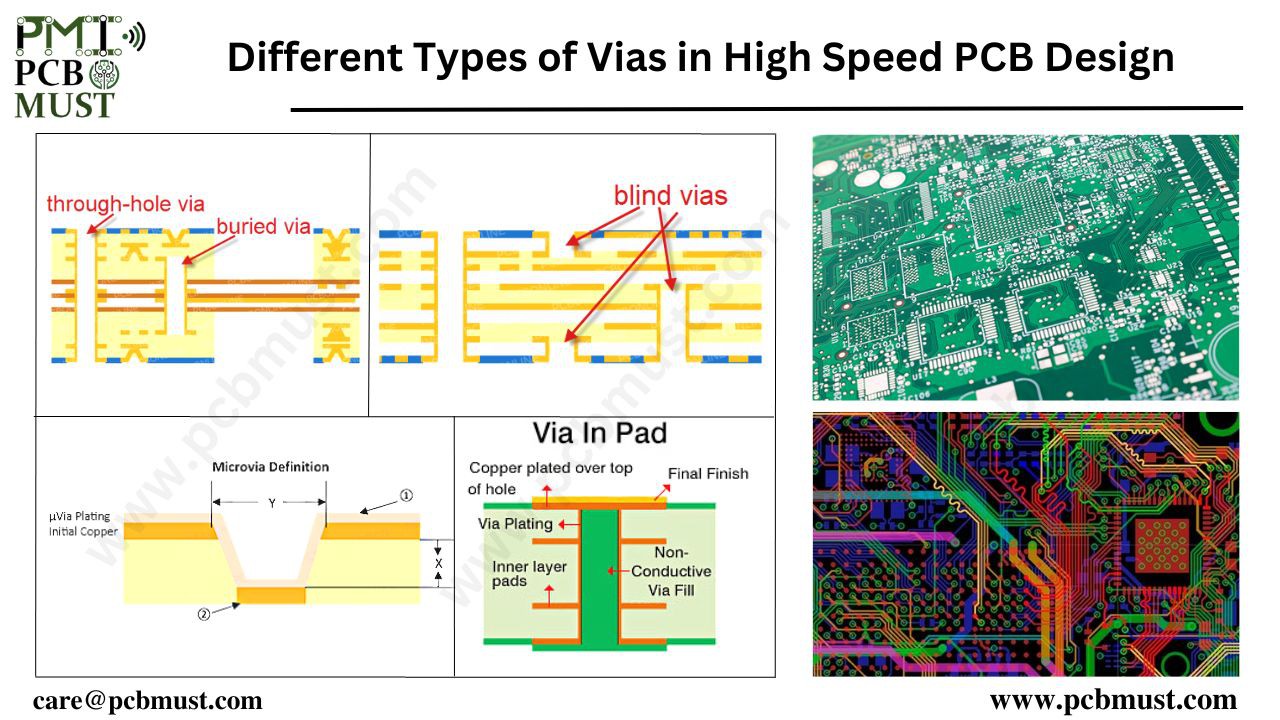As technology advances, the demand for high-speed Printed Circuit Board (PCB) design has increased significantly. In high-speed PCB design, vias play a critical role in the signal integrity and power integrity of the system. Vias are plated holes that are used to connect different layers of a PCB.

However, there are different types of vias that can be used in high-speed PCB design, and selecting the right via type for a particular application is crucial. In this article, we will explore the different types of vias used in high-speed PCB design.
1. Through-Hole Via
Through-hole vias are the most common type of vias used in PCB design. We drilled them holes that pass through all the layers of the PCB, connecting the components on both sides of the board. Through-hole vias are ideal for low-frequency applications, and they can carry a large amount of current due to their larger diameter. However, in high-speed PCB design, through-hole vias can cause signal reflections, noise, and crosstalk, which can degrade the signal integrity of the system.
2. Blind Via
Blind vias are drilled from the top or bottom layer of the PCB and only extend to a certain depth, connecting the inner layers of the board. Blind vias are ideal for high-density PCB designs, where the number of layers is limited. Blind vias reduce the number of layers required in a PCB, and they help to reduce signal reflections, noise, and crosstalk.
3. Buried Via
Buried vias are drilled between the inner layers of the PCB, and they do not extend to the outer layers of the board. Buried vias are ideal for high-density PCB designs where space is limited, and there is a need to reduce the number of layers on the board. Buried vias are more expensive than through-hole or blind vias because they require a special manufacturing process.
4. Micro Via
Micro vias are smaller than traditional vias, and it used them in high-density PCB designs where space is limited. Micro vias are typically less than 0.15mm in diameter, and it can drill them with a laser. Micro vias help to reduce the size of the PCB and improve signal integrity.
5. Via-in-Pad
Via-in-Pad is a type of via that is drilled in the center of a surface mount pad. Via-in-pad is commonly used in BGA (Ball Grid Array) packages, where there are many connections in a small space. Via-in-Pad helps to reduce the number of layers in the board, and it improves the thermal performance of the board.
In conclusion, selecting the right via type is crucial in high-speed PCB design. Each type of via has its advantages and disadvantages, and the designer should consider the requirements of the application before selecting the via type.
Through-hole vias are ideal for low-frequency applications, while blind vias and buried vias are suitable for high-density designs. Micro vias and Via-in-Pad are ideal for space-constrained designs. In addition, choosing the right via type can help to improve signal integrity, reduce noise and crosstalk, and ultimately improve the performance of the system.
Tags:-High Speed PCB Design, PCB Design
About The Author
As the founder of PCB Must Innovations, Avi Gupta is passionate about electronics design and innovation. With a strong background in the industry, he have been involved in numerous successful projects, helping clients bring their ideas to life. He enjoys pushing the boundaries of technology,...
 Avi Gupta
Avi Gupta
Discussions
Become a Hackaday.io Member
Create an account to leave a comment. Already have an account? Log In.